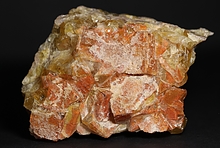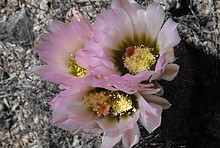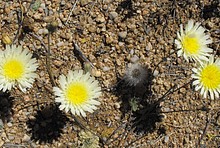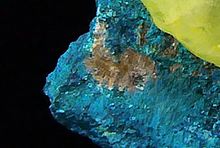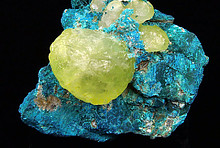Learning CenterWhat is a mineral?The most common minerals on earthInformation for EducatorsMindat ArticlesThe ElementsThe Rock H. Currier Digital LibraryGeologic Time
搜索矿物的性质搜索矿物的化学Advanced Locality Search随意显示任何一 种矿物Random Locality使用minID搜索邻近产地Search Articles搜索词汇表更多搜索选项
╳Discussions
💬 Home🔎 Search📅 LatestGroups
EducationOpen discussion area.Fakes & FraudsOpen discussion area.Field CollectingOpen discussion area.FossilsOpen discussion area.Gems and GemologyOpen discussion area.GeneralOpen discussion area.How to ContributeOpen discussion area.Identity HelpOpen discussion area.Improving Mindat.orgOpen discussion area.LocalitiesOpen discussion area.Lost and Stolen SpecimensOpen discussion area.MarketplaceOpen discussion area.MeteoritesOpen discussion area.Mindat ProductsOpen discussion area.Mineral ExchangesOpen discussion area.Mineral PhotographyOpen discussion area.Mineral ShowsOpen discussion area.Mineralogical ClassificationOpen discussion area.Mineralogy CourseOpen discussion area.MineralsOpen discussion area.Minerals and MuseumsOpen discussion area.PhotosOpen discussion area.Techniques for CollectorsOpen discussion area.The Rock H. Currier Digital LibraryOpen discussion area.UV MineralsOpen discussion area.Recent Images in Discussions
GeneralFluorescent potassium feldspar?

20th May 2012 18:25 UTCJamie Cheshire
James

20th May 2012 18:58 UTCChester S. Lemanski, Jr.
K-feldspar often fluorescences a deep red. Mont Ste. Hilaire comes to mind. At Franklin, NJ, the amazonite variety of microcline fluoresces a gray to blue-gray - quite unique.

20th May 2012 19:37 UTCMichael Hatskel
Please see here: http://www.fluomin.org/uk/list.php . Check microcline and orthoclase - not sure which one occurs in that gneiss.

20th May 2012 22:49 UTCAxel Emmermann

20th May 2012 22:58 UTCAxel Emmermann
Most likely due to titanium. An emission spectrum is on my "to do list" :-)

20th May 2012 23:37 UTCChester S. Lemanski, Jr.
Regarding the photograph which you linked to in your last post, where the specimen is purportedly from the Limecrest Quarry, it is absolutely NOT from that location. It is from the Double Rock pegmatite which intruded the Franklin ore body near its southern end, just North of the Buckwheat open cut. Although a slightly grayish green microcline occurs at Limecrest, it is not fluorescent like the Double Rock material. There is NO bright red fluorecent calcite at Limecrest, only light "baby" bluish with persistent phosphorescence (SWUV) and pale pinkish (SWUV) in restricted occurrences (secondary mineralization). Pure white microcline, occurring as "graphic granite" was encountered near the end of the quarry's life and fluoresced the typical dark red (SWUV). The Double Rock pegmatite intruded the Franklin ore body, possibly at great depth (high P&T values), and melted the adjoining ore which recrystallized as coarse-textured material, mixing the pre-existing calcite and willemite into the pegmatite. The microcline here is amazonite from pale green to almost black, with a pegmatitic or gneissic texture (pictured in your linked photo), and carries Pb (galena; amazonite coloration), REE (Allanite-Ce; monazite-Ce), and U + Th (uraninite, thorutite, thorite). I have one specimen where galena in small specks is clearly visible. As far as I know, there is no other locality with the gray fluorescent response of the Double Rock material. There is titanite in this pegmatite as I recall, plus the thorutite. Obviously, this pegmatite is a soup of the intruded pegmatitic components with the ore body components.

21st May 2012 01:26 UTCTom Klinepeter
21st May 2012 14:41 UTCHarold Moritz 🌟 Expert

21st May 2012 15:29 UTCAxel Emmermann
I got this one in a batch with some other minerals. I'm not an expert on the Franklin locality so the label may be wrong, I have no way to tell. I'll put your comment in the folder: "serious! to be acted upon soon" and act accordingly.
Thanks for bringing the subject up. I want my fluorescent mineral site to be as credible as possible and such ill described localities are not to be tolerated.
Thank you again
Axel

21st May 2012 16:22 UTCChester S. Lemanski, Jr.
Glad to help. Your website is great. I'll be visiting it often.
Chet Lemanski

22nd May 2012 00:57 UTCBob Jackson 🌟 Expert
Bob
22nd May 2012 01:24 UTCDon Saathoff Expert
Don
23rd May 2012 11:49 UTCDan Fountain

23rd May 2012 18:37 UTCAxel Emmermann
that may have two causes. To little of the Fe3+ activator may cause a dim fluorescence but too much of it will cause concentration quenching.

24th May 2012 00:36 UTCBob Hembree
Bob Hembree

24th May 2012 14:10 UTCAxel Emmermann

24th May 2012 14:44 UTCChester S. Lemanski, Jr.
I've seen some very good presentations for cryofluorescence. The effects are amazing as the ultra-low temperatures restrict the movement of the atomic structures. As I recall, the K-feldspar should then emit a yellow fluorescence.

24th May 2012 15:43 UTCJames Pool
Devils Head, Colorado also has some microcline that will show a dull pale red color under SW although I don't think it is as intense as what I found at St Peters Dome.
I haven't heard of cryofluorescence before. It was a bit cooler in the tunnel than it is at home which might explain why the red color doesn't seem as intense with the same lamp at home for the same microcline crystals. Are there any good papers or books that cover cryofluorescence in minerals? I can't seem to find much online regarding minerals, mostly stuff in biology or microscopy.

24th May 2012 18:56 UTCAxel Emmermann
the subject is touched in several books... Gaft, Gorobets, ... I looked into it myself (on a somewhat more simplistic level). You can see the resuts of my endeavour at: http://mkafluorescence.org/MKA/TerlinguaexperimentEN.html#topTT
Quite a few activators show temperature quenching and low temps are almost always beneficial to fluorescent emission. Especially REE produce a much clearer spectrum if you cool them to dry ice or liquid N2 temperature.
Some uranium minerals don't even fluoresce in room temp. They do so, however, frantically when you cool them!

25th May 2012 18:09 UTCRaymond Lasmanis




版权所有© mindat.org1993年至2024年,除了规定的地方。 Mindat.org全赖于全球数千个以上成员和支持者们的参与。
隐私政策 - 条款和条款细则 - 联络我们 - Report a bug/vulnerability Current server date and time: 2024.4.18 02:17:00
隐私政策 - 条款和条款细则 - 联络我们 - Report a bug/vulnerability Current server date and time: 2024.4.18 02:17:00
